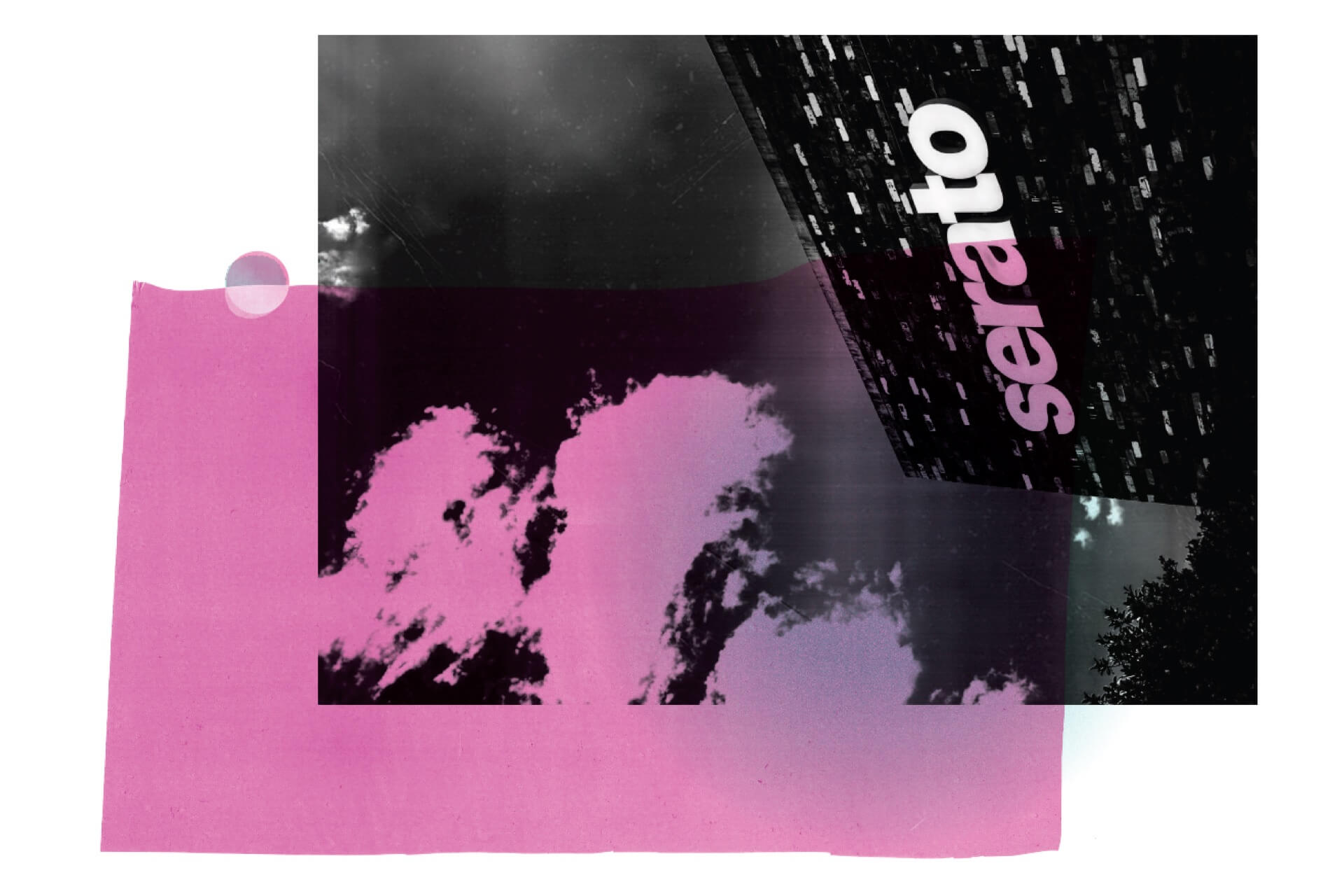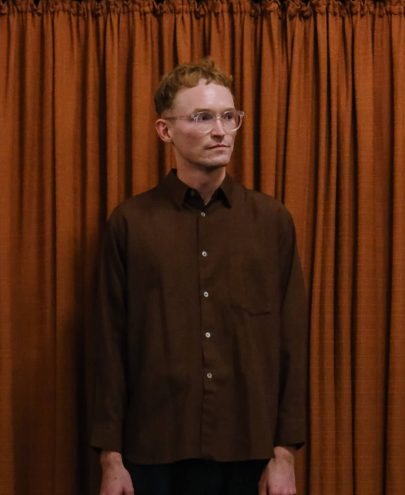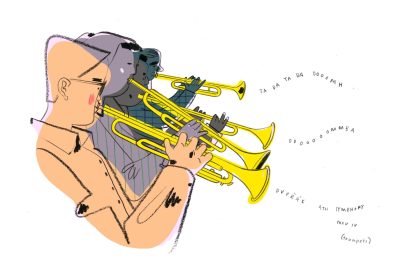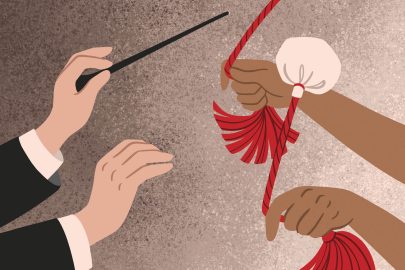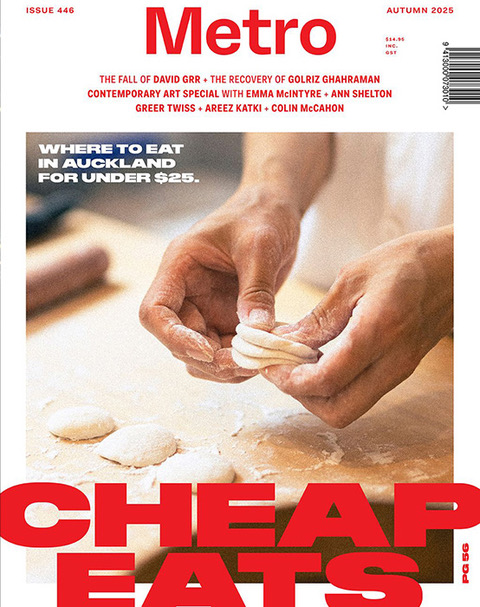Jun 12, 2024 Business
In the early 2000s, Sam Gribben had a vision. He could see a future in which DJs no longer had to carry crates of vinyl to every show. With the right software, all they’d need is their laptop and they could mix music on the fly. “There’s a huge risk of touring with your record collection, which is your livelihood, and it getting lost,” says Gribben. The expat New Zealander’s dream was this: “To load everything on to your laptop and take it as carry-on.”
Gribben was an electrical engineer and a DJ, but lacked the in-depth technical know-how to create the software he needed. Yet he couldn’t stop thinking about it. At a barbecue in Amsterdam, he was told about two New Zealanders with a similar concept. A friend told him: “There’s a company in Auckland doing this thing that you’ve been talking about for the last 10 years.” Gribben’s ears pricked up. He had to know more.
That pair were Steve West and AJ Bertenshaw. As a University of Auckland computer science student in the late 1990s, West created an algorithm to help him learn bass. Bertenshaw, a classmate, saw its potential and helped him turn it into a piece of software, Pitch ’n Time, that could shorten or lengthen a single piece of music without affecting its pitch. “One day he showed me this thing, which was taking some music and changing its speed without the pitch going up or down,” Bertenshaw told New Zealand Herald about the pivotal moment. “I said, ‘Wow, that’s actually really good. That could be a cool product.’”
On its release in 2000, Pitch ’n Time was breakthrough software — but not for the music industry. Instead, it became a key tool for TV- and movie-makers wanting to edit audio to fit the exact length of key scenes. Directors love it because it saves them massive amounts of time — and money. “I would like it to be known that I love Pitch ’n Time,” the director David Lynch has been quoted as saying. Star Wars creator George Lucas is also said to be a major fan.
Gribben immediately booked a flight back to New Zealand. He could see the potential for West and Bertenshaw’s software to be adapted by touring DJs whose backs were breaking under the weight of all that vinyl. He hounded the pair relentlessly. “I came back with the mission to convince them to give me a job,” he says. “I embellished my CV massively, pretended I had lots of money to invest when I didn’t. Anything to get my foot in the door.”
West and Bertenshaw saw Gribben’s hunger and agreed to bring him on board as Serato’s office manager. In 2004, working out of a small basement, the company’s four staff members felt the pressure from others trying to nail the exact same product. “We went at it hard,” says Gribben. It felt like an arms race. “We were flat out. We did crazy hours, anything to get it done.”
Within months, Serato believed they’d nailed their second piece of software, a music manipulation product called Scratch Live. It allowed DJs to load thousands of tracks on to their laptops, then mix and manipulate digital music files using records that produced a continuous monotone which, when manipulated by the DJ, is picked up by the software to manipulate the digital music in the exact same way. It worked, but there were sceptics. “There were a lot of non-believers in the beginning,” says Gribben, who eventually became Serato’s CEO.
Back then, purists looked down on the digital revolution as the antithesis of creativity. “For hip-hop DJs, vinyl was the only way,” says Gribben. Phil Bell, the industry veteran known as DJ Sir-Vere, was one of those. He’d seen early prototypes of Scratch Live and remained unimpressed. “I was really puzzled by the whole thing,” Bell says. He thought: “None of us are going to drag a PC along to a gig.”
His views soured further when he arrived at Gribben’s home one night for a Scratch Live showcase. Gribben had hoped to win his friend over with an early iteration of the product, but it didn’t go to plan. “He had a foot pedal and it was all colour-coded,” says Bell. “He was hitting it with his foot, and that was it.
“I was like, ‘This is dumb as shit.’”
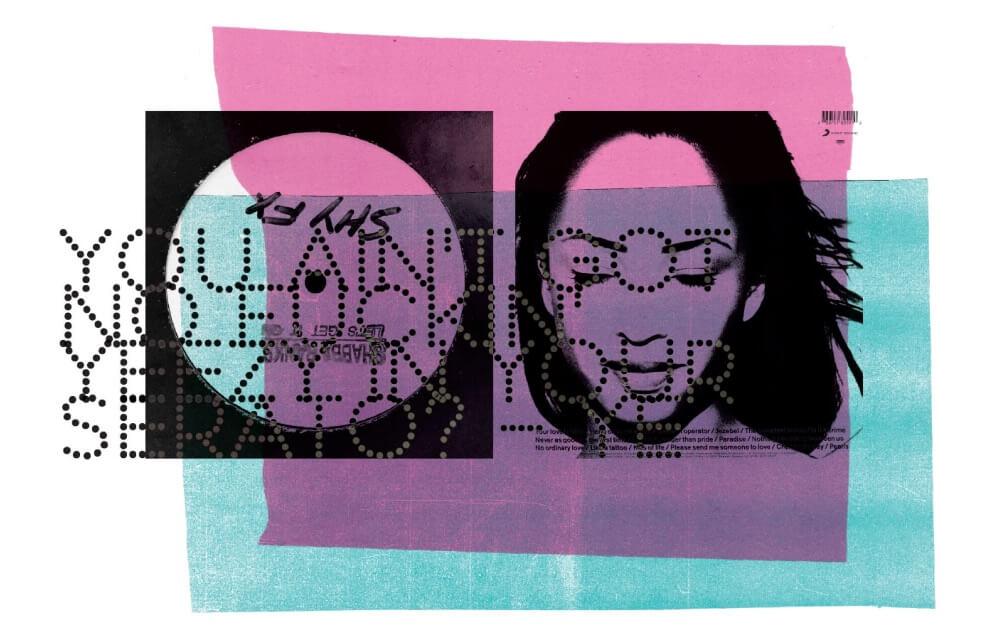
It didn’t take long for Bell to change his mind. By the end of 2004, Gribben had abandoned his foot pedal prototype and Serato’s Scratch Live software had been launched. Bell’s DJ friends were all talking about what seemed to be a magical software development that solved all of the problems and risks they faced using their own vinyl collections. “I started to go, ‘Oh, I think I’m going to pay attention to this,’” Bell says.
Scratch Live meant DJs were no longer limited by what music they could carry with them. “You never know how the night will go,” says OP Miller, a New York-based DJ and Serato’s head of artist relations. “You could be playing hip-hop and they want to hear dancehall; you’re playing dancehall [but] they want to hear house. With Serato, you could play literally anything.” At industry events and showcases, Serato was on the tip of everyone’s tongue. “I got so many messages about it,” says Bell. Within a matter of months, it felt like every DJ had discovered Scratch Live, and converted.
Miller credits his career to Scratch Live. “From that day forward, everything changed in my life,” he says. He used to have to carry boxes of vinyl up and down four flights of stairs to his New York apartment. Now, he needed only his laptop, loaded with mp3s, and he could cater to any audience. “I have a tool that allows me to go between this bar or this club, or do this wedding or this corporate event, to be able to survive.”
For Gribben, Scratch Live’s uptake happened so fast he wrote the user manuals only after its release. Soon, dozens of new staff would join Serato to help keep up with demand. “All the touring DJs embraced [Scratch Live],” Gribben says. “The touring ones are the best ones, and they’re the ones out in front of people.” The DJs who were naysayers and sceptics would “go to gigs and see their heroes using it”. Looking back on that time, Bell admits he should have championed Serato sooner. “I was being way too judgemental, way too harsh. The light switched over, instantly. It felt like within a year, everyone was using it. Everywhere I went, everywhere I looked. I couldn’t even believe how fast it took off.”
When I call Bell, he’s pulling into the carpark at Mai FM, where he’s due on air. Twenty years later, he remains a committed Serato convert. “[I use it] religiously, every fucking day,” he says. “Within two hours, I’ll be on the radio using it.” When he made his influential Major Flavours mixtapes in the early 2000s, Bell would track down every song he wanted to use on vinyl, then beatmix them together, a painstaking process that would take him months.
Would he do it that way now?
“No, I wouldn’t,” Bell says. “I’d use Serato.”
In a flash, a New Zealand company with a handful of staff operating out of an Auckland office became an industry powerhouse, a major player beloved by Hollywood and anyone who used a turntable on a regular basis. Since Scratch Live was released, Serato has become synonymous with DJ culture, with DJ Jazzy Jeff, Timbaland and The Roots’ drummer Questlove notable high-profile fans. Serato is so big as a brand it’s become name-checked by musicians. Mariah Carey has sung about the company, and Eminem and A$AP Rocky have rapped about it. A quip on Kanye West’s 2010 song ‘Dark Fantasy’ — “You ain’t got no Yeezy in your Serato?” — seemed to cement their status. Gribben still has that quote pinned to his LinkedIn page.
These days, Serato employs 160 staff with purpose-built offices containing kitted-out music studios in Auckland, Los Angeles and New York. The world’s biggest DJs rely on a suite of Serato software products for their livelihoods. Major producers use different Serato software to craft beats. “Drake’s producers use it. Kanye’s producers use it. Metro Boomin… has made some of the biggest hits of the past five years,” says Nick Maclaren, Serato’s chief strategy officer. He uses it himself: as the local hip-hop producer known as 41, he used Serato software to produce recent comeback songs by PNC and David Dallas.
Yet, despite most of its success happening overseas, Serato has refused to move to the United States and join the Silicon Valley tech fray, preferring to keep its head office in Auckland. Here, staff operate out of a refurbished open-plan Ponsonby building filled with commissioned art, exposed brick, DJ decks in the staff room and a help-yourself fridge full of craft beer and kombucha. Serato is not a well-known name in New Zealand. The company hasn’t sparked headlines or chased local exposure. That’s very deliberate. “We’re genuinely changing the world [and] it’s a genuinely amazing story,” says Serato’s chief executive Young Ly. “It’s just one we’re very humble about… We don’t really brag.” It’s true: this writer has covered Aotearoa’s music industry for 20 years yet hasn’t written a single word about them.
Until now. Serato’s sale to the Japanese DJ hardware company AlphaTheta was announced last July. The Commerce Commission launched an investigation to answer claims the US$70 million (NZ$115 million) sale would create an unfair monopoly. Detractors say the combination of AlphaTheta, the company that owns Pioneer, one of the world’s biggest DJ hardware brands, and Serato, one of the biggest software brands, could stifle innovation and block competitors. A decision on the issue is pending. In the months since the investigation was launched, controversy has erupted, with Serato fans and former executives speaking out against the sale. A lawsuit has been threatened; the media has covered the issue extensively. Those with high stakes in the decision sit on both sides of the fence — and views are heated.
Serato is suddenly dealing with something it never wanted: a constant stream of exposure. It says the investigation came out of the blue. “That was a surprise,” says Ly. “We didn’t see that coming at all.”
So, in the middle of the biggest drama of the company’s 26-year lifespan, I asked the team at Serato if I could pay them a visit. They said yes.
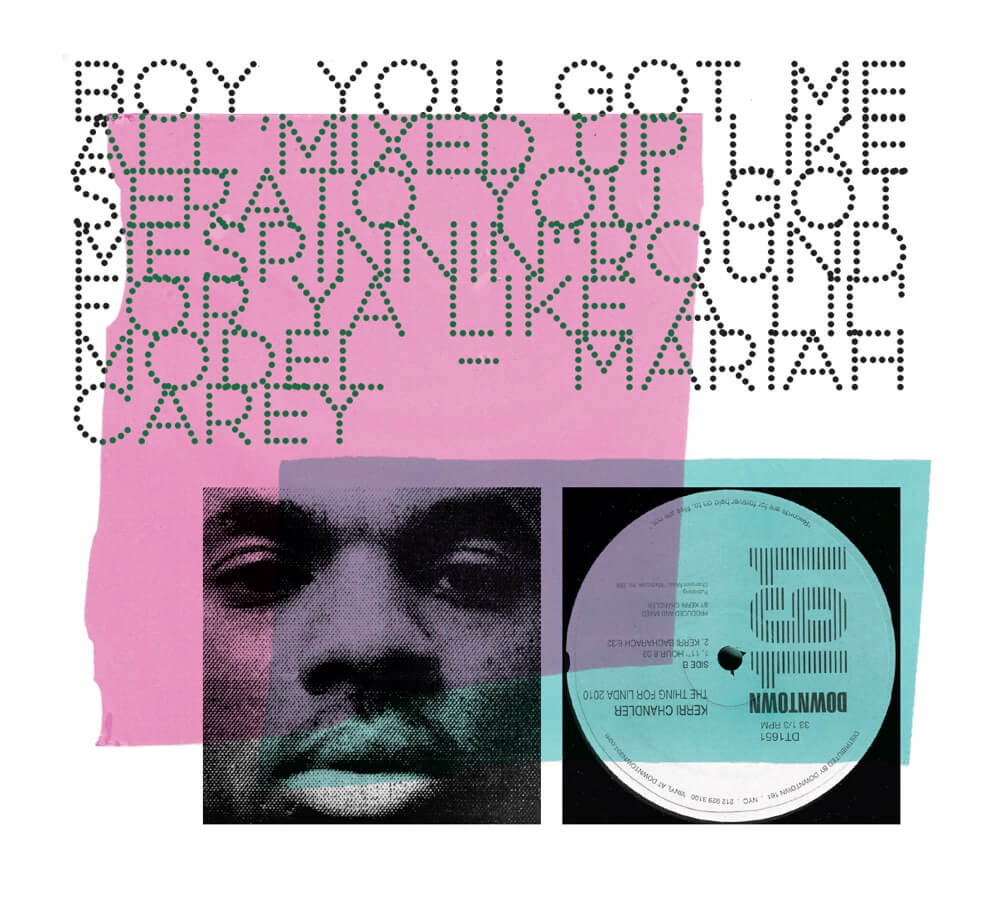
To find Serato’s Auckland headquarters, you’ll need to navigate your way past hungry diners in the bougie eatery Ponsonby Central. Step into the elevator, push the button for level two and you’ll be taken to a small foyer with jet-black double doors. The doors are locked. There’s no reception, no one to greet you: just an iPad. Tap in your name and you’ll be forced to sign a disclaimer asking visitors not to take photos or reveal “non-public information relating to Serato and its products, features, technologies, ideas, prototypes, processes, know-how, trade secrets, business and financial information, and other information of a confidential nature”.
Through the doors, things are far more welcoming. “It’s not an office,” says Ly, showing me around an open-plan floor. “It’s our space.” With towering video screens, floor-to-ceiling art and black furniture, it doesn’t look like any office I’ve worked in. Staff enjoy a flexible work-from-home policy, required to show up for just one day every two weeks. “It’s fun, there’s camaraderie, people just enjoy it,” says Ly. Serato’s success is on show everywhere you look. Two decades of Serato pop culture ephemera is displayed in frames and on bookcases: Nike sneaker collaborations, collectable vinyl, out-of-print products now worth a fortune and that David Lynch quote with a photo of the director. It all revolves around a studio where visiting artists can record music. T-Pain was the most recent international visitor.
During my two-hour visit, Ly doesn’t act like any CEO I’ve met before. He doesn’t check his phone once, or cut me or any of his staff off while we’re talking. He acts so casually, I’m forced to ask him, mid-interview, to confirm he’s actually Serato’s chief executive, and not a university student on work experience. It makes him laugh. He came here in 2016 from Air New Zealand, where he overhauled the airline’s payment processes. Like many others, Ly hadn’t heard about Serato, and didn’t know what the company did, before he applied for the job. He liked what he saw. “When I heard it was a New Zealand DJ company, I thought it was going to be five people in a garage,” he says. At that point, staff numbered in the 50s. “It was like, ‘What the hell is going on here?’”
Ly quickly realised the company’s potential. “Every Friday night, there are 100 DJs working in Auckland. Multiply that by every city in the world [and] do the math,” he says about the customer base who could be paying for Serato software packages and subscriptions, which is how the company makes most of its money. His thought process went: “Of course I’d like to be part of that story. I can live in New Zealand and I can change the world.”
Ly feels lucky to be there, and says I’m lucky to be visiting. A PR minder is on hand at all times. “You’re the first person in a very long time who has come to ask about the story,” he says. The CEO admits he’s nervous about my visit. “It’s cool… Don’t burn us,” he says at one point. “We’re not trying to be secretive. It’s just…” he says at another, trailing off. This high-value tech company is full of trade secrets. During a tour of the area where Serato’s software developers work, I’m asked to turn off my recorder. “No pictures, please,” says Ly, lowering his voice so he doesn’t disturb his staff. “This is a restricted floor. There’s unreleased hardware here that our partners would want to keep secret.”
Back in the staff cafeteria, kombucha is passed around and Maclaren gives me a showcase of Serato Stems, a product released last year that can isolate and sample different parts of a song — the drums, say, or vocals, synth or guitar riffs — without needing the original song files. That software allows immediate sampling, meaning DJs can create new music on the fly. Maclaren shows me how, taking the drums from a Sade song then mixing in lyrics from the rapper Vince Staples to create an entirely new track. “[A year ago] that was impossible,” says Maclaren. “You couldn’t have done it.” Now, he, and every other DJ on the planet who uses Stems, can do it whenever they want.
It’s things like that that mean Maclaren wouldn’t want to work anywhere else. “I started scratching on my parents’ turntable at 15, breaking their needles,” says Maclaren. Now he travels the world, and works with his heroes. “There are tools being made here in Auckland,” he tells me, “that are used on the new Drake album, the new Kanye album.” This, he declares, is his dream job.
There’s a tiger painted in bright red colours on Serato’s wall, but there’s also an elephant in the room with us. On 17 April, the Commerce Commission will release its decision on whether Serato’s sale to AlphaTheta can proceed. A lot is riding on that decision. The process has, Ly admits, been unsettling for staff. Some have needed reassurance. “It caught us slightly off guard,” he repeats.
What’s at stake? Read through the submissions and you’ll find heated arguments for both sides. Some say the company’s sale will create a global monopoly that locks out other competitors and stymie innovation. “It will definitely limit choices for the consumer and give [AlphaTheta] an unfair monopoly on both DJ hardware and software,” one unnamed DJ submitted. Local retail store Rockshop also spoke out, claiming “innovation will be lost, end users will have less choice and prices will increase”.
That’s an argument also made by the biggest name in the fight against the sale. Morgan Donoghue was Serato’s marketing director, then chief operating officer, from 2011 to 2017. He left to manage InMusic NZ, a stable of imported DJ hardware brands. In its submission, InMusic states the sale would “substantially lessen competition” and “should not be cleared”. Donoghue didn’t respond to a Metro request for comment, but told the New Zealand Herald a month after the sale was announced: “We know the Serato guys, we’ve worked closely with them for years, we have a great relationship with them. We’re just worried that Pioneer buying them out would change everything.”
InMusic is fighting the sale — hard. It has threatened legal action if the deal goes through and has campaigned, too, taking out full-page newspaper advertisements that claim it would put 90% of the DJ software and hardware market into the hands of one company. That’s a claim Ly denies. “We just don’t agree with it,” he says. “There are so many new people in the app space. There are so many standalone hardware [developers] we don’t have anything to do with… We just don’t see how we or any one player could influence that.”
Plenty take Ly’s side. Those in favour say the sale would be a boon for the country’s tech industry. “New Zealand should be embracing any chance we have to help founders and investors make an exit so that they can reinvest funds into new local ventures, and create more opportunity for New Zealanders,” writes one, a recurring theme of several submissions. Others say the sale could benefit DJs and create more innovation. “I believe this merger isn’t about limiting NZ competition but rather combining the expertise of two industry innovators,” says one. Another submitter states that they work with more than 300 DJs in Auckland and most of the people they talk to “want this merger to happen for the possibilities that will occur”.
With all this conflict swirling, why sell Serato at all? Ly says founders West and Bertenshaw (now Wilderland) want out. “Serato was started by Steve and AJ and their parents,” he says. “That was 25 years ago. Their parents are way past retirement. After 25 years of looking after us, they’re like, ‘Hey, everyone, it’s time to move on.’”
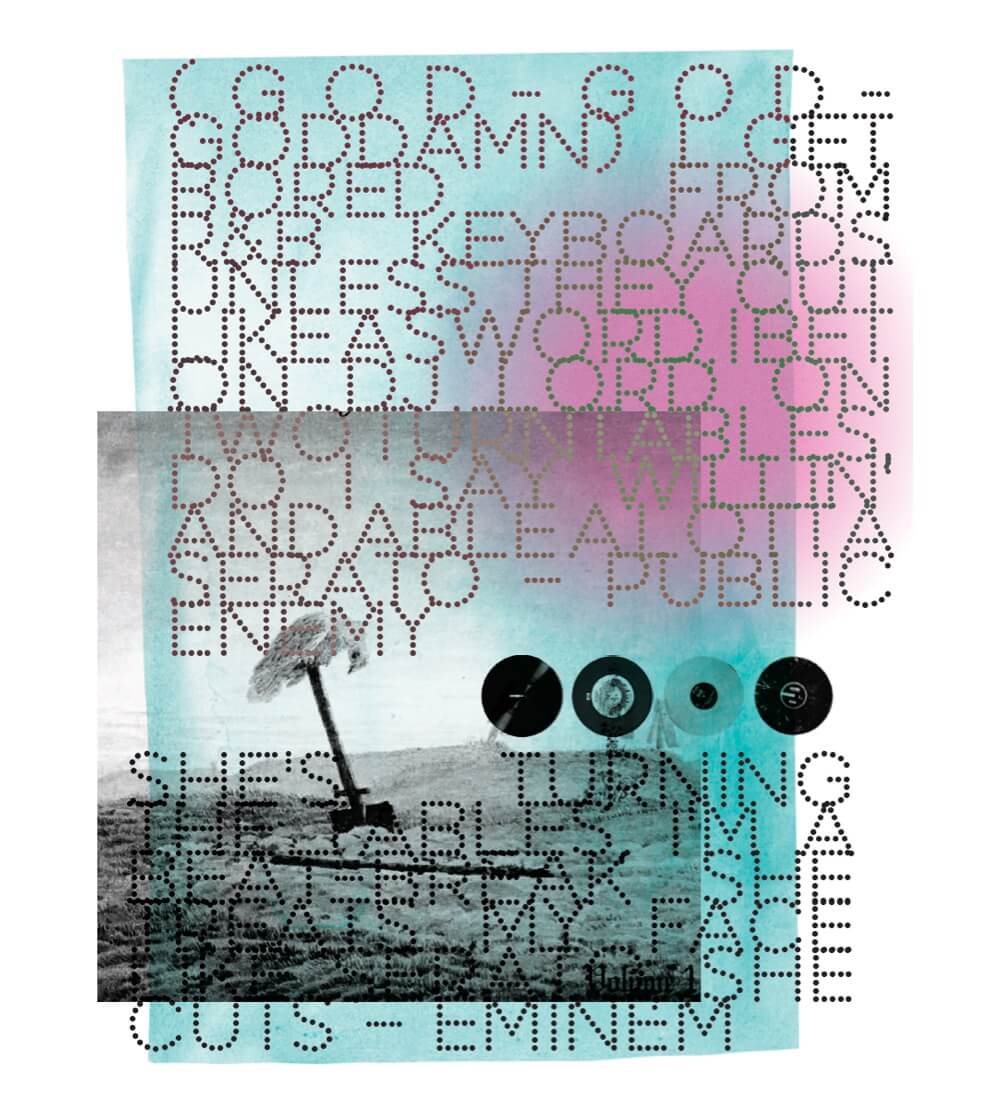
Will they be allowed to pass on the mantle? No one seems to know. The Commerce Commission has delayed its decision three times. When asked to make a call, everyone spoken to for this story remained steadfastly on the fence. “We can’t speculate,” says Ly. Bell, who works with Donoghue at InMusic, is also reluctant to comment. “You can view our submission to the Commerce Commission on their website,” says a spokesperson for Rockshop. “We won’t be making further comment beyond that at this time.”
Gribben, who left Serato in 2014 to create the music training tool Melodics, is staying out of it too. “I’ve got a lot of friends involved on all sides,” he says. “I’m watching to see what happens and how it unfolds, but honestly I don’t know which way it’s going to go.” Serato’s preparing for either outcome. “Transaction or no transaction, we’re still a profitable company,” says Ly. “Our game plan essentially stays the same. We’re still based in New Zealand, we’re still at arm’s length. Everything remains the same.”
After reading the submissions, talking to as many people involved as possible, touring the company’s headquarters, and licking a finger and sticking it in the air in an attempt to read the wind, I can’t make my mind up either. It’s Bell’s words that have bounced around in my head the most. At the end of our interview, I asked him: “So, to sum up, you love Serato, you use their software every day, you couldn’t live without it — and you don’t want the deal to go through?”
He laughed. “Exactly.”

